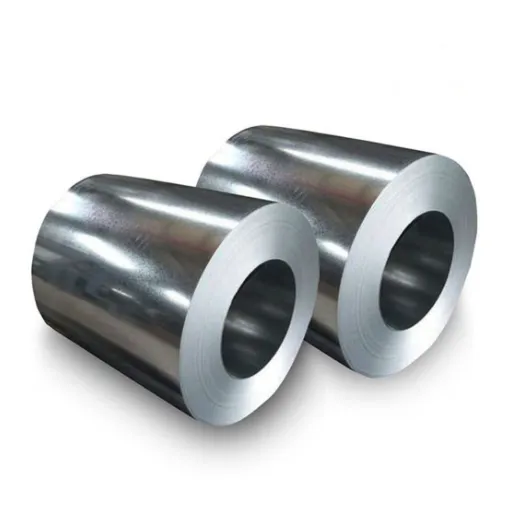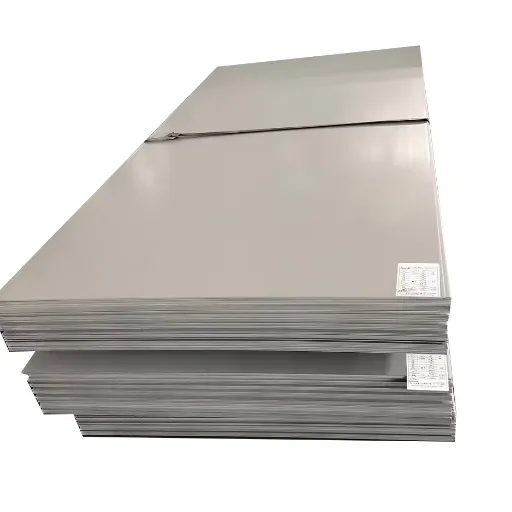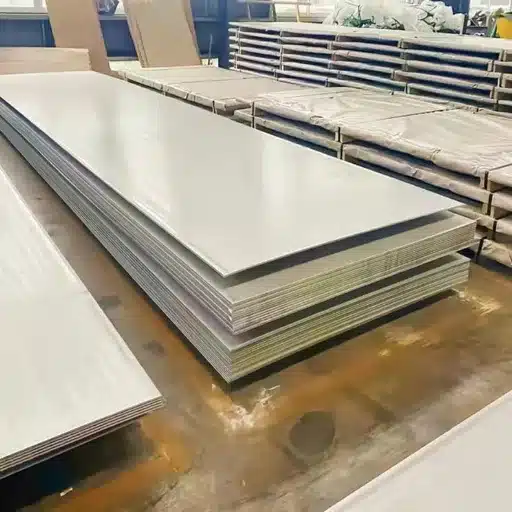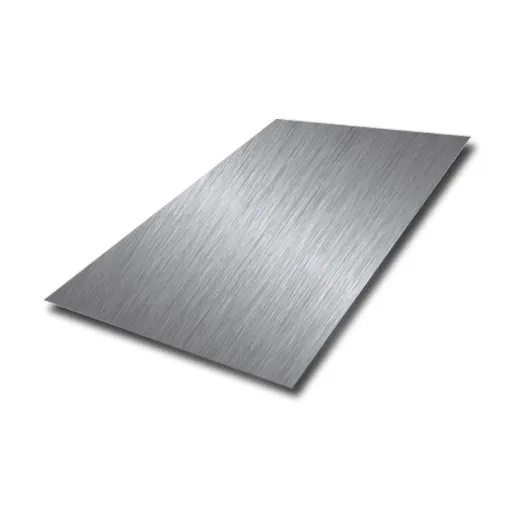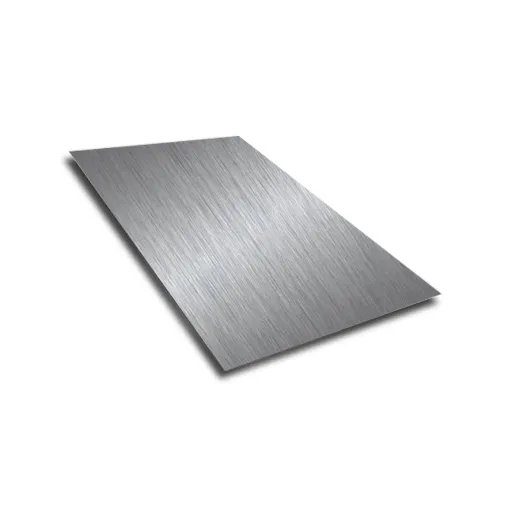Galvanized steel coils have found their way into countless industries, appreciated for their strength, corrosion resistance, and the various different applications for which they are used. From the construction sphere and automobile manufacturing, to infrastructure, these coils provide strength and longevity to a myriad of different applications. But what does the construction industry need galvanized steel coils so much for? How are galvanized steel coils being used in the industry? This article will surely give any steel aficionado enough insight into GI coils by discussing its properties, benefits, and different applications that have made it so important in today’s world. Whether you are working in the industry or are just curious about the materials used in the structures around you, this comprehensive guide should have a lot of information to offer on the importance of galvanized steel coils.
Introduction to Galvanized Steel Coils
What are Galvanized Steel Coils?
Steel sheets that have been coated with zinc for the prevention of corrosion or rust are known as galvanized steel coils. Galvanization consists of either hot dipping or electroplating steel in zinc. The zinc layer acts as a protective layer by preventing moisture, oxygen, and other degrading elements from coming into contact with the metal over time.
Another benefit of galvanized steel coils is their long lifespan and resistance to rust. Thus, they are applied in a variety of fields. They find usage in construction, automobile manufacture, and in making of household appliances. For instance, in construction, they are used for roofing sheets, wall cladding, and structural support systems. Because of their resistance to adverse natural effects such as moisture or temperature extremes, galvanized steel coils promise years of performance with minimal maintenance.
Versatility is another fundamental property sincerely held by galvanized steel coils. They are pliable and can be easily shaped, cut, and welded to give them allowances for specific size and design requirements. However, the corrosion-resistant materials are often too cost-prohibitive, giving industries an economical alternative while catering to that very specific demand of theirs: usefulness and affordability. With that in mind, whichever properties galvanized steel coils bear has ensconced them deep in the hearts of industries and commercial ventures.
Importance of Galvanization in Steel Manufacturing
Galvanization in steel manufacturing has its share of gaining glory due to increased life and durability of resultant steel products. The process involves covering steel with a protective coat of zinc that inhibits any harmful environmental factors such as moisture and oxygen. This protection is imperative to delay rusting and corrosion so that the steel structure can keep its structural formities through time.
One consequence of galvanization is its cheapness. Whereas it does accrue some costs at the outset during steel production, it proves to be a tremendously beneficial investment as it really pays off in the long run. In more economic terms, galvanized steel needs almost no maintenance, having a longer lifespan compared to the untreated steel, which further translates to its usefulness in areas where steel is subject to rigorous environmental conditions-further finishing construction, transportation, and agricultural equipment.
Galvanization aids a company in sustainable manufacturing. The zinc coating would be recyclable along with steel for the environmentally friendly option. Keeping it longer in the life of steel reduces frequent replacements; hence, saving resources and energy. These advantages stress the importance of galvanization in making steel products with long-life, very economical, and sustainable in industries in general.
Overview of Hot Dip Galvanization Process
Hot-dip galvanization protects metal by making a galvanized layer over steel or iron by immersing them in molten zinc. The process starts by cleaning the metal surface to ensure a good adhesion of zinc. This cleaning requires pre-treatment steps such as degreasing, pickling in acidic solutions, and fluxing. These steps purify and prepare the surface for the last step of galvanizing.
After being cleaned and given final surface preparation, the metal is dipped into a molten zinc bath heated to around 450°C (842°F). The zinc reacts with the steel or iron to form the various zinc-iron alloy layers beneath a layer of pure zinc. This thin-film system becomes an enduring barrier against moisture, oxygen, and other corrosive elements.
Once coated, the steel is removed from the zinc bath and cooled, usually by means of water cooling or air cooling. Hence, its life is prolonged by the process of hot dip galvanization and requires almost no maintenance as long as time elapses. This assures that it shall keep in steel protection in construction, transportation, and other grueling environments. That, in turn, becomes a lasting, cost-efficient, and environmentally friendly solution on which to rely for metals having a much longer time span of use.
Types of Galvanized Steel Coils
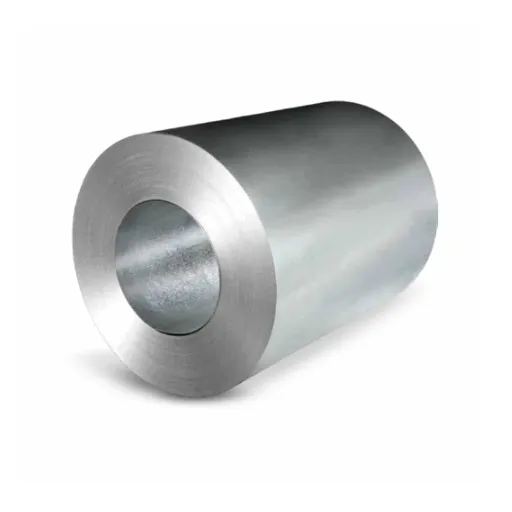
Hot Dip Galvanized Steel Coils
The process behind being able to produce hot dip galvanized steel coils requires steel to be dipped into a bath of molten zinc. A durable and protective zinc coating is created on the surface of steel. Hot dip galvanized steel coils inhibit the formation of rust, and rather, they provide a perfect surface for treatments or coatings. These are hence very well suited for use across industries such as automotive manufacture, building construction, and appliance manufacture, thanks to their durability and economy. The coating thickness can be made higher or lower, depending on its requirement in a project, so it can perform well wherever moisture, chemicals, or harsh temperatures attack it.
A major advantage of hot dip galvanized steel coils is their lifetime potential. According to research, galvanized steel can remain for decades even in tough environments before major maintenance is due. The zinc acts as a sacrificial coating, preventing the steel beneath from rusting and wear. Hence, this makes hot dip galvanized steel coils an environmentally conscious decision, leading to less waste and lowered replacement costs with the passage of time. An addition to that, the process produces hardy coating guaranteeing uniformity in quality through a huge bulk of material, which is crucial in large-scale projects.
Technological advancements in hot dip galvanization have led to further improvements in galvanized steel coils in their properties. For instance, the use of modern pre-treatment techniques and continuous hot dip galvanizing allows for enhanced surface quality and mechanical properties. These extraordinary possibilities started high-strength steel applications wherein industries could develop lighter yet stronger parts. Together with tight quality control and international standards, hot dip galvanized steel coil continues as the preferred material for industries needing environmentally friendly and trustworthy solutions.
Electro-Galvanized Steel Coils
Electro-galvanized steel coil is a variety of steel product produced via electroplating. In this process, a fine Zinc layer is deposited on the surface through an electrochemical process. Unlike hot dip galvanizing that yields relatively nonuniform and rough finishes, electro-galvanization will yield a uniform smooth finish with an excellent application of thickness control over zinc coating. Hence, electro-galvanized steel coils are almost always suitable for applications requiring a better quality surface finish, such as automotive panels, electronic appliances, and decorative purposes.
The astounding corrosion-resisting feature definitely works to the advantage of electro-galvanized steel. The zinc coating forms the first line of defense specially meant to block moisture and oxygen from passing through steel surfaces and rust formation. Given the finer and more polished surface produced through electro-galvanizing rather than hot dip galvanizing, it is ordinarily used in industries where aesthetics are a primary concern. Electro galvanizing enjoys widespread use for the exterior parts of cars, where the finish must be flawless, including in durability paint requirements.
Apart from further improvements in the manufacturing technologies that promote the characteristics of electro-galvanized steel coils, modern technologies allow for controlling consecutive coating deposition, enhanced adhesion of zinc layers, and increased weldability for a wider use across various industries. It is also an electro-galvanized steel product that can be considered environmentally friendly, as the production process produces much less waste than other methods. Thus, these features make electro-galvanized steel coils into a good choice for the manufacturers willing to utilize technically advanced high-performance materials.
Key Properties of Galvanized Steel Coils
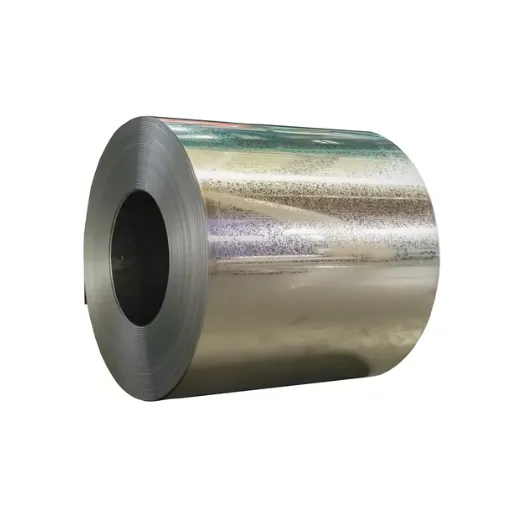
Corrosion Resistance
Corrosion resistance is one major benefit of galvanized steel coils, especially in the areas exposed to a severe condition. The outer coating of zinc will function well to act as a barrier between the steel and the corrosive surroundings so that elements such as moisture, oxygen, and any other pollutants do not bring destruction on their steel foundation underneath. This is done due to the principle of galvanic protection, whereby the metal zinc has a lower electrode potential than that of steel; hence, it corrodes preferentially and saves the steel underneath. That is why it is very popular in the sector of construction, transport, and sea-side project.
The amount of corrosion resistance depends on how thick the zinc coating is. More of it provides more protection; it, therefore, can increase their service lifespan even in polluted or wet conditions. For example, galvanized steel, in its structural parts application, may withstand rain, wind, and temperature change over decades of service without substantial corrosion. Marine-grade steel with enhanced zinc coating can withstand the salt-water attack, especially on the beaches and areas near seawater at ports and offshore assemblies.
Recent advances in coating technologies have further improved the corrosion-resistant properties of galvanized steel coils. Methods like alloy coatings of aluminum-zinc or coatings of magnesium-enhanced and zinc-aluminum extend beyond traditional galvanization by several times in terms of protection. With industrial demand increasing for materials that last, galvanized steel coils remain the preferred choice for engineers and manufacturers looking for solutions that would reduce maintenance and extend asset life.
Strength and Durability
Galvanized steel coils have inherent strength combined with the endurance of the steel such as an outer layer of zinc providing a means of providing safeguards against environmental hazards. The combination offers the structural integrity that is required for mounting loads and maintaining performance under a number of conditions. Galvanized steel is known for being appropriate to be able to support large spans in buildings as well as for automotive frames designed to resist impacts and tough handling.
In addition, the durability of galvanized steel coils is improved due to the resistance they offer against wear and tear. Steel coils do not get weakened by rust or oxidation, unlike unprotected steel, and hence are maintained for an extended period without damage on their mechanical properties. This is especially critical in application areas such as bridges, power transmission towers, and heavy machinery where failure may lead to very expensive repairs or safety issues.
Modern manufacturing techniques give the possibility of creating high-strength galvanized steel coils designed for specialized applications. High-strength steel grades combined with the advanced coating techniques enable the manufacturers to get lighter yet tougher material, which is a highly required feature in the industry of the automotive and aerospace sectors. This innovative approach ensures that galvanized steel coils are the major choice, which promises optimal performance with minimal maintenance over time.
Formability and Weldability
Formability is one of the necessary properties of galvanized steel coils for the manufacturing of various parts and components. The material can be bent, shaped, or rolled without cracking or causing damage, thus enabling very intricate designs and structural forms. Such flexibility is especially important in industries like automotive and appliance manufacturing, where precision-engineered parts must meet very demanding standards.
Weldability is another important property that makes galvanized steel coils very useful. Although the presence of zinc coating may pose some difficulties during welding, modern techniques such as resistance spot welding and TIG welding have been adapted to work well with galvanized steel. Pre-treatment processes and specialized equipment prevent defects such as porosity or weak joints, thus ensuring strong and reliable welds. This capability allows manufacturers to build assemblies that maintain structural integrity and corrosion resistance.
Recent technological advancements have been made in the coating formulations and steel alloys, which improve both the formability and weldability of galvanized steel coils. Manufacturers can now get coatings that stay intact even during intense forming operations, thus reducing the need for post-forming touch-ups. These advancements can further increase the material’s versatility and expand its application areas, making galvanized steel coils the popular choice for engineers requiring a balance of performance, durability, and ease of fabrication.
Applications of Galvanized Steel Coils
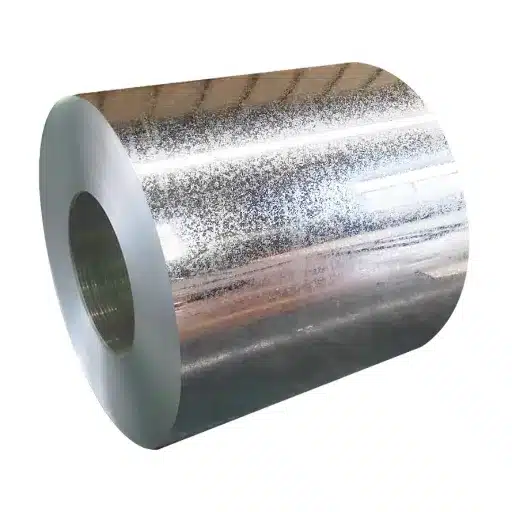
Construction and Building Materials
Galvanized steel coils play an important role in the construction industry as they form roofing, wall cladding, and structural framing systems with durability and corrosion resistance, which makes them suitable for both residential and commercial buildings. The use of galvanized steel is very common for roofing sheets because it has the ability to perform under various weather conditions, including heavy rain, strong winds, and intense heat. Its low maintenance requirements and long lifespan make it one of the most efficient materials for the construction industry.
Galvanized steel coils are one of the main building materials in infrastructure works such as bridges, transmission towers, and highway guardrails, among others. In these cases, the strength of the material and corrosion resistance can provide safety as well as durability in the long run by ensuring the structures remain intact and functional for decades. Being lightweight and easy to install also reduces costs and speeds up the construction process, hence the material being favored by contractors and engineers.
Recent trends in construction have increasingly emphasized the use of sustainable materials, and this is where galvanized steel coils fit in. These coils are eco-friendly since they can be recycled, which reduces waste and conserves the natural resources. The energy efficiency in their production and their long operational life make them a responsible choice for green building projects. As the construction industry evolves with a focus on sustainability, galvanized steel coils remain a fundamental material that balances performance, cost, and environmental impact.
Automotive Industry
The automotive industry relies heavily on galvanized steel coils for body panels, chassis, and structural components. The corrosion resistance of zinc coating is vital to the vehicle’s longevity, especially in regions where roads are salted during winter or in coastal areas where salt spray is common. Galvanized steel helps ensure the body of the vehicle maintains its integrity, thereby enhancing safety as well as aesthetic appeal over the vehicle’s operational life.
In addition to rust protection, galvanized steel coils offer the strength and formability required for modern vehicle designs. The material can be stamped, welded, and assembled into complex shapes that meet the rigorous standards of the automotive industry. Recent advancements in high-strength galvanized steel allow manufacturers to produce lighter vehicles that improve fuel efficiency while not compromising on safety. This trend aligns with global efforts to reduce emissions and enhance vehicle performance.
The automotive industry also benefits from the economic advantages of using galvanized steel coils. The extended lifespan of vehicles with galvanized components reduces warranty claims and improves customer satisfaction. As car manufacturers continue to innovate with electric and hybrid vehicles, galvanized steel remains a critical material that supports both traditional and future automotive technologies. Its versatility and reliability make it indispensable in the production of safe, durable, and efficient vehicles.
Appliances and Consumer Goods
Galvanized steel coils are widely used in the manufacture of household appliances such as refrigerators, washing machines, and air conditioners. The corrosion-resistant coating ensures that these appliances maintain their appearance and functionality over years of use, even in humid or damp environments. The smooth finish of electro-galvanized steel, in particular, provides an ideal surface for painting and finishing, allowing manufacturers to create products that are both durable and visually appealing.
Beyond household appliances, galvanized steel coils are also used in the production of consumer goods like cabinets, shelving, and metal furniture. The material’s strength and versatility make it suitable for items that need to withstand regular use and exposure to varying conditions. Its affordability compared to stainless steel or other corrosion-resistant metals makes galvanized steel a popular choice for manufacturers looking to balance quality and cost.
As consumer preferences shift toward more sustainable products, the recyclability of galvanized steel becomes a significant advantage. Manufacturers can promote their use of eco-friendly materials, appealing to environmentally conscious consumers. Additionally, the long lifespan of galvanized steel products reduces the need for frequent replacements, which contributes to waste reduction and resource conservation. This makes galvanized steel coils an excellent choice for companies committed to sustainability and long-term value.
Agriculture and Farming Equipment
The agricultural sector heavily depends on galvanized steel coils for various applications, including storage silos, fencing, greenhouses, and farm machinery. These coils provide the corrosion resistance necessary to withstand exposure to fertilizers, pesticides, and the elements, ensuring that equipment and structures remain functional for extended periods. Galvanized fencing, for instance, is a popular choice for livestock enclosures because it resists rust and requires minimal maintenance.
In addition to fencing and storage, galvanized steel is used in irrigation systems and water tanks where corrosion resistance is crucial. The zinc coating protects the steel from water-related damage, extending the life of these critical components. Farmers benefit from the reliability and durability of galvanized steel, which reduces downtime and repair costs. This is particularly important in regions with harsh weather conditions or high humidity levels.
The use of galvanized steel coils in agriculture also supports sustainable farming practices. The long lifespan of galvanized structures and equipment reduces the need for frequent replacements, which conserves resources and minimizes environmental impact. As the agricultural industry continues to adopt more efficient and sustainable methods, galvanized steel coils remain a vital material that combines performance, affordability, and environmental responsibility.
Advantages of Using Galvanized Steel Coils
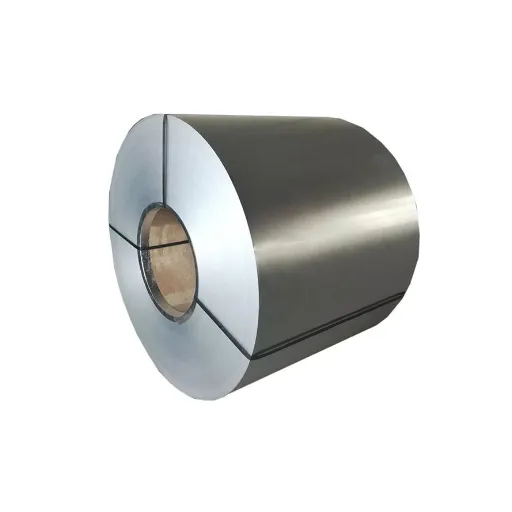
Cost-Effectiveness
One of the most compelling reasons for the widespread use of galvanized steel coils is their cost-effectiveness. While the initial investment in galvanized steel may be slightly higher than untreated steel, the long-term savings are substantial. The protective zinc coating significantly reduces maintenance costs by preventing rust and corrosion, which means fewer repairs and replacements over the material’s lifespan. This makes galvanized steel an economical choice for industries and projects where budget management is critical.
In addition to lower maintenance expenses, galvanized steel coils offer operational savings by extending the life of structures and equipment. Buildings, vehicles, and appliances made with galvanized steel can last for decades without significant deterioration, reducing the need for costly renovations or upgrades. This long-term durability translates into better return on investment, making galvanized steel a financially sound choice for businesses and consumers alike.
The efficiency of the galvanization process also contributes to cost-effectiveness. Modern hot-dip galvanizing and electro-galvanizing techniques are highly automated, allowing for large-scale production at relatively low costs. This efficiency ensures that galvanized steel coils remain competitively priced while delivering superior performance. As industries continue to seek materials that offer both quality and affordability, galvanized steel coils stand out as a practical and reliable solution.
Low Maintenance Requirements
Galvanized steel coils are prized for their low maintenance requirements, which makes them an attractive option for both industrial and residential applications. The zinc coating acts as a barrier against environmental factors, eliminating the need for frequent inspections, repainting, or repairs. This is particularly beneficial for structures in remote or hard-to-reach locations, where maintenance activities can be costly and logistically challenging.
The self-healing property of the zinc coating further reduces maintenance needs. If the coating is scratched or damaged, the surrounding zinc continues to protect the exposed steel through galvanic action, preventing rust from spreading. This inherent protective mechanism ensures that galvanized steel components remain functional even in harsh conditions, minimizing downtime and extending the operational life of equipment and structures.
For businesses and homeowners, the low maintenance nature of galvanized steel translates into peace of mind and reduced long-term costs. There’s no need for regular painting or coating applications, which saves both time and money. This ease of upkeep makes galvanized steel coils an ideal choice for applications ranging from roofing and fencing to industrial machinery and transportation infrastructure. As a result, galvanized steel continues to be the material of choice for those seeking hassle-free, long-lasting solutions.
Environmental Benefits
Galvanized steel coils offer significant environmental benefits, making them a sustainable choice for various industries. The galvanization process uses zinc, which is abundant and fully recyclable, reducing the environmental footprint of steel production. At the end of their life cycle, galvanized steel products can be recycled without losing their quality, contributing to a circular economy and minimizing waste in landfills.
The long lifespan of galvanized steel also contributes to environmental sustainability. By lasting for decades with minimal maintenance, galvanized steel reduces the need for frequent replacements, which conserves natural resources and energy. This durability is especially important in construction and infrastructure projects, where the use of long-lasting materials can significantly reduce the environmental impact over the life of a building or structure.
Furthermore, the energy efficiency of modern galvanization processes has improved significantly, reducing greenhouse gas emissions and energy consumption during production. Many manufacturers are also adopting renewable energy sources and implementing cleaner production techniques to further minimize environmental impact. As industries worldwide move toward more sustainable practices, galvanized steel coils represent a responsible choice that aligns with environmental goals while delivering exceptional performance and value.
Maintenance and Care for Galvanized Steel Coils
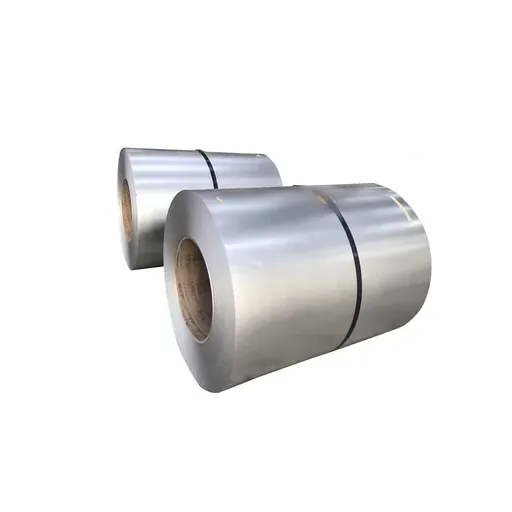
Proper Storage Practices
Proper storage of galvanized steel coils is essential to maintain their quality and prevent damage before use. Coils should be stored in dry, well-ventilated areas to avoid moisture accumulation, which can lead to white rust—a form of zinc corrosion that occurs in humid conditions. Ideally, storage facilities should maintain a relative humidity below 60% and provide adequate air circulation to prevent condensation on the coil surfaces.
When storing galvanized steel coils, it’s important to keep them off the ground using pallets or racks to prevent contact with moisture and contaminants. Coils should be covered with breathable materials that protect them from dust and debris while allowing air circulation. Plastic covers should be avoided as they can trap moisture and promote corrosion. Additionally, coils should be stored in a stable position to prevent them from rolling or shifting, which could cause physical damage to the zinc coating.
For long-term storage, periodic inspections are recommended to identify any signs of corrosion or damage early. If white rust is detected, it can often be removed with a stiff brush and the affected area can be treated with a zinc-rich paint or coating to restore protection. Following these storage practices ensures that galvanized steel coils remain in optimal condition until they are ready for fabrication and use, preserving their performance characteristics and extending their service life.
Cleaning and Surface Treatment
Regular cleaning of galvanized steel surfaces helps maintain their appearance and corrosion resistance. For routine maintenance, galvanized steel can be cleaned with water and mild detergent using a soft brush or cloth. This removes dirt, dust, and other surface contaminants that might otherwise trap moisture and accelerate corrosion. It’s important to avoid abrasive cleaners or tools that could scratch or damage the zinc coating.
In industrial or coastal environments where galvanized steel is exposed to pollutants or salt, more frequent cleaning may be necessary. Power washing with fresh water can effectively remove accumulated deposits and prevent buildup that could compromise the protective coating. For stubborn stains or discoloration, specialized cleaners designed for galvanized surfaces can be used following manufacturer guidelines. After cleaning, the surface should be thoroughly rinsed and allowed to dry completely.
Surface treatments such as passivation or chromate conversion coatings can be applied to enhance the corrosion resistance of galvanized steel, especially before painting or powder coating. These treatments improve the adhesion of subsequent coatings and provide an additional layer of protection. For damaged areas where the zinc coating has been compromised, zinc-rich paints or cold galvanizing compounds can be applied to restore protection and prevent rust formation on the underlying steel.
Repairing Damaged Coatings
Despite the durability of galvanized steel, the zinc coating can be damaged during fabrication, installation, or use. Common causes of coating damage include scratches from handling, abrasion from contact with other materials, and exposure to welding or cutting operations. When such damage occurs, it’s important to repair the coating promptly to prevent corrosion of the underlying steel and maintain the integrity of the structure or component.
For minor damage, touch-up with zinc-rich paints is an effective repair method. These paints contain high concentrations of zinc particles that provide galvanic protection similar to the original coating. The damaged area should be cleaned and prepared according to the paint manufacturer’s instructions before application. Multiple coats may be necessary to achieve adequate thickness and ensure complete coverage of the exposed steel.
For larger damaged areas or in critical applications, thermal spraying of zinc (also known as metallizing) can be employed to restore the coating. This process involves spraying molten zinc onto the prepared steel surface, creating a protective layer similar to hot-dip galvanizing. While more expensive than paint touch-up, thermal spraying provides superior corrosion protection and is suitable for repairing damaged coatings on bridges, towers, and other large structures. Regular inspection and timely repair of damaged coatings are essential practices that ensure galvanized steel continues to provide long-term protection and performance.
Challenges and Limitations of Galvanized Steel Coils
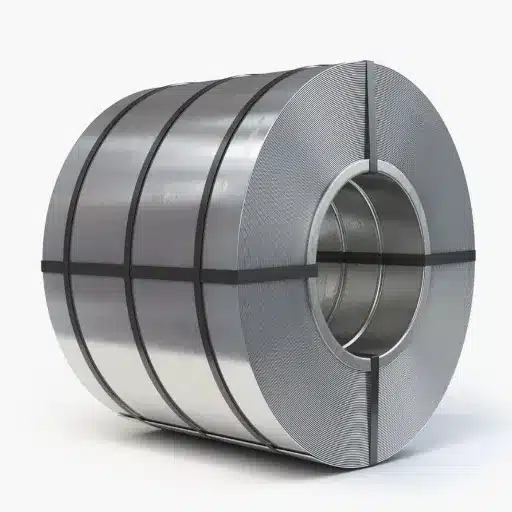
Welding Considerations
Welding galvanized steel presents unique challenges due to the presence of the zinc coating. When heated during welding, zinc vaporizes at relatively low temperatures (around 420°C or 788°F), creating zinc oxide fumes that can be hazardous if inhaled. These fumes can cause a condition known as metal fume fever, which produces flu-like symptoms. Proper ventilation, respiratory protection, and adherence to safety protocols are essential when welding galvanized steel to protect workers’ health.
The vaporization of zinc during welding can also affect weld quality. Zinc vapor can become trapped in the weld pool, leading to porosity, cracking, and weak joints. To mitigate these issues, welders often remove the zinc coating from the weld area through grinding or using specialized techniques before welding. Alternatively, welding processes such as resistance spot welding, which minimizes zinc vaporization, or the use of modified welding parameters can help produce sound welds while preserving some of the coating’s protective properties.
Despite these challenges, advances in welding technology and techniques have made it increasingly feasible to weld galvanized steel effectively. The use of specialized filler materials, controlled welding speeds, and post-weld treatments can produce strong, durable welds. For applications where welding is frequent or critical, manufacturers may opt for electro-galvanized steel, which has a thinner coating that produces fewer fumes and less welding complications. Understanding and addressing these welding considerations is crucial for fabricators and engineers working with galvanized steel coils.
White Rust Formation
White rust, also known as wet storage stain, is a form of zinc corrosion that can occur on galvanized steel coils when they are exposed to moisture in the absence of adequate air circulation. This condition typically appears as a white or gray powdery deposit on the steel surface and is caused by the reaction of zinc with water and carbon dioxide. While white rust is primarily a cosmetic issue and doesn’t significantly compromise the structural integrity of the steel, it can be unsightly and may affect the adhesion of paints or coatings applied to the surface.
White rust is most likely to form during storage and transportation when galvanized steel is tightly packed, covered with non-breathable materials, or exposed to condensation. To prevent white rust formation, it’s essential to store galvanized steel in dry, well-ventilated conditions with adequate spacing between coils or sheets to allow air circulation. Using protective oils or surface treatments can also provide additional protection during storage and shipment.
If white rust does occur, it can often be removed through brushing or light abrasion, followed by cleaning with a mild acid solution if necessary. In severe cases, the affected area can be treated with zinc-rich paint or coating to restore protection. Modern galvanization processes sometimes include post-treatment with passivation chemicals that form a protective film on the zinc surface, significantly reducing the risk of white rust formation. By understanding the causes and prevention methods for white rust, users can maintain the appearance and performance of galvanized steel coils throughout their service life.
Environmental Impact Concerns
While galvanized steel offers many environmental benefits through its longevity and recyclability, the galvanization process itself has some environmental considerations. The hot-dip galvanizing process requires significant energy to melt zinc and heat steel to the required temperatures, which can contribute to greenhouse gas emissions if fossil fuels are used. Additionally, the pre-treatment steps involving acid pickling generate acidic waste streams that must be properly treated and disposed of to prevent environmental contamination.
Zinc runoff from galvanized steel structures can also pose environmental concerns in certain situations. When exposed to rain or water, small amounts of zinc can leach from the coating and potentially accumulate in soil or water systems. While zinc is an essential trace element and is generally not harmful in small quantities, high concentrations can be toxic to aquatic organisms. This is particularly relevant in urban environments where runoff from galvanized roofing or structures may enter storm drains and waterways.
To address these concerns, the galvanizing industry has made significant strides in adopting more sustainable practices. Many facilities now use closed-loop systems to recycle acid and minimize waste, and there’s increasing adoption of renewable energy sources to power galvanizing operations. Research into alternative coating materials and methods continues to explore ways to reduce environmental impact while maintaining the protective benefits of galvanization. As environmental regulations become more stringent and sustainability becomes a greater priority, the industry is committed to balancing the benefits of galvanized steel with responsible environmental stewardship.
References
- Statistical Methods for Quality Control of Steel Coils
This article discusses statistical regression models for estimating the quality of galvanized steel coils. - G30, G40, G60, and G90: Understanding Zinc-Based Coating Weights
This paper explains zinc-coated (hot-dipped galvanized) steel and its applications. - Resistance Spot Welding of Galvanized Steel: Part I. Material
A study on material variations and process modifications in resistance spot welding of galvanized steel. - An Intelligent Control System of Polymerization of a Metal Sheet
This paper explores the drying process of polymer coatings on metal sheets. - Investigation of Field Corrosion Performance and Bond Strength of Galvanized Steel
A project report on the structural performance and corrosion resistance of galvanized reinforcing steel. - Click here to read more.
Frequently Asked Questions (FAQ)
Q: Can you explain what galvanized steel coils are?
A: Galvanized steel coils are those thin strips of steel that have been protected by a layer of zinc to stain away corrosion. The very process involves coating the steel with a film of zinc acting on the steel as a shield against the elements, which means they did not do away any durability to the material, and instead, it makes the material waterproof to moisture and corrosive elements.
Q: How are galvanized steel coils made?
A: Generally, zinc is made to deposit well on the steel by immersing it in a bath in the case of molten zinc being used to create the galvanized steel coils coating. This coating gives tough adhesion and weldability, among others. Galvanized coils are used for many applications, such as making panels for vehicles and roof sheets.
Q: Do galvanized steel coils have any benefits?
A: The galvanized steel coils make for sturdy supports and offer rust protection in a varied array of applications in structure. The corrosion resistance properties are noteworthy especially in such environments that are either polluted or where moisture is there.
Q: Can galvanized coils be painted?
A: Yes. Pre-painting gives color to these galvanized steel coils. This process retains the protective properties offered by the zinc coating and enhances its visual appeal. Roofing is a typical application of pre-painted galvanized steels, along with gutters.
Q: What distinguishes hot-dip galvanized from cold-rolled steel?
A: Hot-dip galvanized steel is coated with zinc for corrosion protection by the immersion of steel in a molten zinc bath. Cold-rolled steel, on the other hand, is steel that has not received this zinc coating and thus has inferior rust resistance.
Q: Are galvanized steel sheets suitable for outdoor use?
A: As galvanized steel sheets demonstrate excellent corrosion resistance and can endure harsh environmental conditions, they are thus predominantly employed in outdoor applications, thereby functioning as a reliable option in construction and manufacturing components that are exposed to external weather elements.
Q: What role does zinc play in galvanized steel?
A: Zinc provides corrosion protection along with the steel by passivating and preventing corrosion of the steel beneath. This zinc coating imparts a lot of corrosion protection and properties so that the actual steel, being galvanized, can be used in all kinds of industrial settings in chassis parts, shelving, and so forth.
Q: How are the properties of galvanized steel affected by the coating process?
A: As a result of coating, corrosion resistance and impact resistance are gained by the steel. Zinc layer protects steel, and it also provides good coating adhesion, weldability, etc., due to which galvanized steel coils find wide usage in varied industries.
Q: What are some common applications that utilize galvanized steel coils?
A: Galvanized steel coils are used in a variety of applications including roofing, gutter systems, automotive manufacturing, and even for making appliances such as refrigerators. Their versatility as well as anti-corrosion capabilities make interior as well as exterior applications possible in the construction and industrial sectors.
Conclusion
Galvanized steel coils represent a crucial material in modern industry, offering an exceptional combination of strength, corrosion resistance, and versatility. From construction and automotive manufacturing to agricultural equipment and consumer appliances, these coils provide reliable performance across diverse applications. Their cost-effectiveness, low maintenance requirements, and environmental benefits make them an intelligent choice for sustainable development. As technology continues to advance with innovative coating systems and manufacturing practices, galvanized steel coils will remain at the forefront of materials engineering, delivering lasting value and performance for generations to come.

